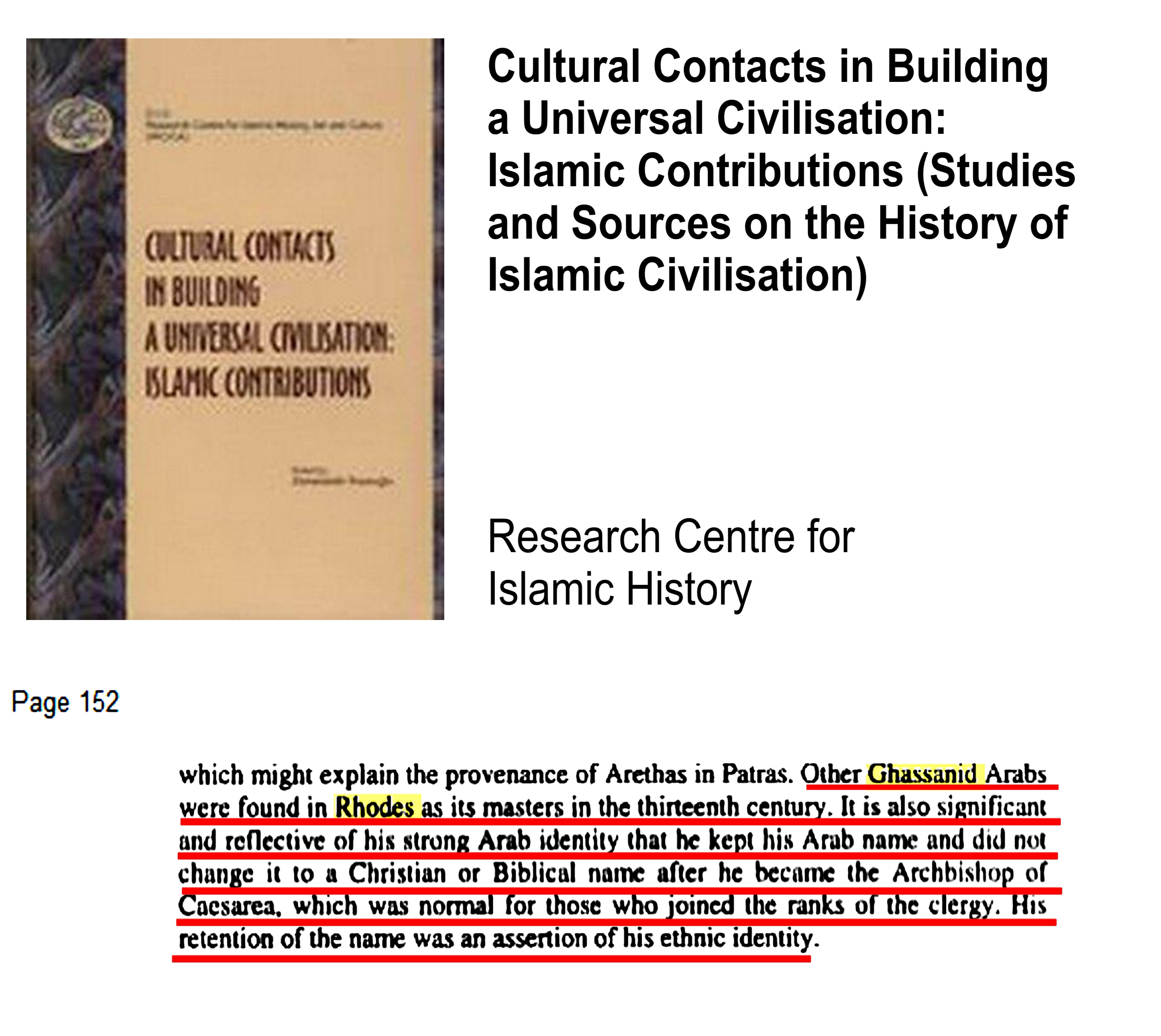
Rhodes is the largest of the Dodecanese islands in terms of land area and also the island group’s historical capital. It’s famous for its magnificent resorts, ruins and for being occupied by the Hospitaller Knights of Saint John of Jerusalem.
However, what many people don’t know is that the island was ruled by Ghassanid sovereigns for over half century. The precise date of the island control is not known but the fact that Leo Gabalas (Greek transliteration of “Jablah” referring to the last King of Ghassan) was recognized as “Ceasar” (in Byzantium a sort of Imperial Sovereign ruler) and master of Rhodes in 1203 CE is widely documented adding another imperial title to the Ghassanid Dynasty (other being ‘Basileus Araves’ or “Emperor of all Arabs” in 529 CE and Byzantine Emperor in 802 CE). This imperial dignity is also recognized by Islamic sources like the Research Centre for Islamic History.

The Leo’s early life and the origin of title of “Caesar” and the details of his establishment of control over Rhodes are unclear. Contemporary sources make clear that Rhodes had slipped out of imperial Byzantine control and was held by an independent ruler already at the time of the Fourth Crusade (1203–04 CE). This ruler is usually identified with Leo, but Nikephoros Blemmydes claims that Leo held his title by hereditary right, which may indicate an unknown predecessor who actually seized control of the island. This theory is defended, amongst others, by scholar Michael F. Hendy. It has been surmised that at some point Leo acknowledged the suzerainty of the Empire of Nicaea, and that the title of Caesar may have been granted by the Nicaean rulers Theodore I Laskaris (ruled 1205–1222 CE) or John III Vatatzes (r. 1221–1254 CE). On the other hand, if he (or a relative) held power on Rhodes since before 1203, the title may have been granted by the Angeloi emperors.
Emperor Leo Gabalas ruled until 1240 CE being succeeded by his brother John. It’s also known that both rulers were part of international treaties with the neighboring States like the Venetian Republic and also had their own coinage.


It’s also known that Leo’s brother and successor John Gabalas ruled the island until the Nicaean annexation (around 1250 CE).
Interesting to point out that, from 1211 CE until 1250 CE the world had two Ghassanid States concomitantly. One in Al-Aqoura (current Mount Lebanon) and the other in Rhodes.
More about the Ghassanid Dynasty HERE
Great history so Royalty 🙏🏻
LikeLiked by 1 person
It’s an remarkable article in favor of all the
online visitors; they will take benefit from it I am sure.
LikeLiked by 1 person